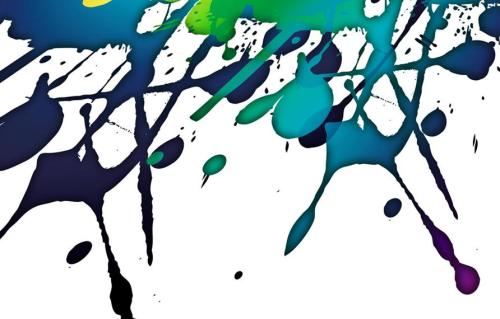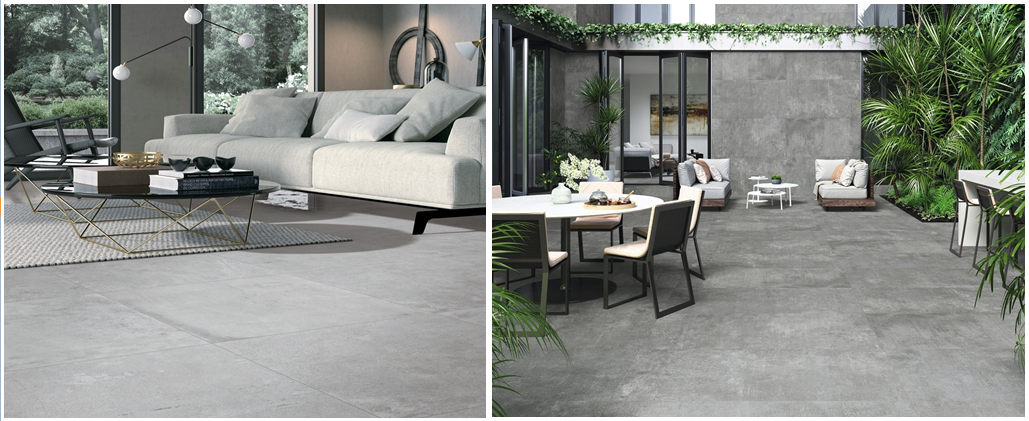Special terms for paints
 Hair clouding: The varnish, oil, or thinner appears cloudy and opaque due to the precipitation of insolubles.
Hair clouding: The varnish, oil, or thinner appears cloudy and opaque due to the precipitation of insolubles. Discoloration of paints or varnishes: Discoloration of paints or varnishes: The paint deviates from its initial color due to certain chemical or physical changes or chemical reactions with the container.
Thickening: Thickness increases due to the loss of thinners during storage.
Thickening fattening: In the storage process, due to the chemical reaction between the components caused by the increase in consistency (not necessarily to the extent that they can not be used), the phenomenon of volume expansion. Synonyms: thickening; swollen.
Gelling: The change from a liquid to an unusable solid or semisolid state.
Crust skinning: Coatings in the container, due to oxidative polymerization, the film formation on the liquid surface phenomenon.
Settling: The phenomenon that the solid component of the paint sinks to the bottom of the container during storage. Synonyms: Shen bottom; settlement.
Caking caking: pigments, pigments, and other pigments in pigmented paint precipitate as dense blocks that are not easily redispersible with stirring.
There are coarse seeds: coarse particles (ie, a few crusts, gels, aggregates, or foreign coarse particles) exhibited by the paint during storage.
Rough ski ski: In the process of storage, due to the flocculation of the pigment, the fineness of the grind is deteriorated.
Livering; feeding: The consistency of the coating has increased to the extent that it must be used before it is used or it is still difficult to use. This is due to the paint-based gelling of the coating or the chemical reaction between the components of the paint. Note: Liver's English name, livering, is applicable to paints and varnishes. Feeding is only applicable to paints.
Flocculation: The formation of agglomerates in a paint or dispersion.
Flower floatin: paint containing a variety of different pigment mixtures during storage or drying process, one or more pigments isolated or floated out and concentrated in the paint or paint film surface uneven color stripes and spots and so on.
Float floodin: hair flower extreme situation. Some pigments rise to the surface, although the surface color of the paint film is uniform, but it is obviously different from the color of the wet film just applied.
Bubble bubblin: The air or solvent vapor, or both, that the paint forms during the application process. This bubble can disappear during the drying process of the paint film, and it can also exist permanently.
Pin-holesv: A disease state that resembles needles in the paint film. It is due to the air bubbles in the wet paint film and the other air bubbles that are generated from cracking, which can not be caused by the leveling before the paint film is dried [cured], or due to improper processing or application of the substrate material (thickness of the paint film, etc.). Caused.
Wrinkling wrinkling: The film shows how much regular wavelet amplitude wrinkles in the form of wrinkles, which can be deep and some or all of the film thickness. The size and concentration of wrinkles can vary with the composition of the film and the conditions during film formation (including temperature, wet film thickness, and atmospheric contamination).
Orange skin: The surface of the paint film has an orange-like appearance. Spraying (especially when the substrate is flat) is susceptible to this condition.
White blushing: In the drying process of bright paint, the paint film sometimes appears milky white. This is due to the fact that the water vapor in the air is condensed on the surface of the wet paint film and/or one or more solid groups in the paint are analyzed.
When the coating is applied on a vertical surface, the wet film moves downward due to poor sag resistance, improper application, or excessive film thickness, resulting in thick edges under various shapes. Non-uniform coating.
Silk ropiness: Approximate parallel linear stripes appear on the surface of the wet paint film, and this streak still exists after the paint film is dried. This is a pathological condition brought about by some application methods. When dipping or flowing, the filaments appear along the direction of the flow; when brushing, the filaments appear along the brushing direction of the final brush.
Brush mark brush mark: After brushing, leaving a ridge stripe phenomenon on the paint film. This is due to paint drying too fast, the viscosity is too large, paint brush is too rough, improper brushing methods and other reasons to make the film can not be caused by leveling.
Bleaching bleaching: Color paint film due to acid and alkali and other chemical effects, resulting in the gradual lightening of its color, and ultimately completely whitening phenomenon. This is mainly due to the fact that pigments in pigmented paint disperse and lose their original color.
Yellowing yellowing: The yellowing of the paint film during the aging process. Synonyms: yellowing.
Darkening: The color of the paint film gradually darkens and darkens due to the influence of the climate. This is mainly due to the fact that the paint base color is yellow and dark due to the UV emblem, and that the lead-containing pigment chemically reacts with the vapor or hydrogen gas present in the atmosphere to generate black lead.
Destruction: The deterioration of various properties exhibited by a paint film during aging. For example, the paint film strength, flexibility, adhesion, etc., decreased, or there are powdered, open and bright and peeling phenomenon.
Bloom bloom: The appearance of creamy frost-like deposits on the surface of the original shiny paint film. It is easy to wipe off the cream with a damp cloth at the beginning of the frosting. Synonyms: fog.
Loss of light loss of gloss: The gloss of the film is reduced due to the influence of the climate. Synonyms: light, English synonym: dulling; lost of gloss.
Whitening: After the paint film has been soaked in water, gasoline, etc., due to honeycomb swelling, the surface of the paint film appears milky white. Slight whitening will disappear as the liquid volatilizes; severe whitening will occur. Even if the liquid evaporates, the paint film will not return to its original state.
Swelling swelling: After being exposed to liquid immersion, the paint film thickens and softens due to the liquid penetrating the entire paint film. Synonyms: swelling; bloating.
Softening softening: The hardness of the film after the liquid film has been soaked due to swelling becomes significantly lower. Synonyms: soft.
Blistering: The coating bulges out of the substrate (substrate or its underlying coating) due to localized loss of adhesion, causing the film to assume a rounded, convex deformation. Bubbles can contain liquids, vapors, other gases, or crystals.
Cracking cracking: The appearance of discontinuous appearance of the paint film. It is usually caused by the aging of the paint film. Its more important forms are as follows.
Hair-cracking: A very shallow surface crack and an irregularly distributed cracking pattern. Synonyms: hair cracking.
Cracking: A shallow surface crack and a cracked form that is distributed over the paint film in a generally regular pattern. Synonyms: thin fissures.
Small crack crazing: similar to cracks, but its cracks are deeper and wider.
Deep cracks: Cracks penetrate at least one cracking pattern of the coating, which can eventually lead to complete destruction of the paint film.
Cracked crocodiling (or alligatoring): A wide crack that resembles a cracked form of a turtle shell or crocodile skin. Synonym: Crocodile crack.
Crow's foot cracking: The crack pattern resembles a cracking form of a crow's claw.
Peeling: The removal of one or more coats from their undercoat, or the complete release of the coat from the substrate. Synonyms: shedding; peeling.
Flaking: The paint film exhibits a shedding phenomenon that varies from large to small, uneven distribution. Usually caused by cracking.
Erosion: The paint film is natural due to natural aging and wind sand, and it may lead to bare substrates.
Chalking: The surface of a paint film due to the degradation of one or more paint bases and the dispersion of pigments. The phenomenon of loose attachment of fine powder is exhibited.
Embrittlement: Due to ageing and other reasons, the film deteriorates its flexibility. English synonym: embrittling.
Mildew-growing: In the warm environment, the surface of the paint film breeds various molds. Synonyms: mildew; mildew. Synonyms in English: mold-growing, fungus-growing.
Tack: After drying the tacky paint film surface is sticky again. Synonyms: back sticky; back sticky.
Pollution stain: The phenomenon of partial discoloration of the paint film caused by the penetration of paint into the paint film.
Concrete or cement look porcelain tiles are a massive favourite of homes or eatablishments looking to own a very industrial design.Our cement look tiles have a beautiful variation of tones within each color to produce a very realistic and warm effect, which it becomes the best choice of interior building decoration and projects for commericial area.

- With 60x60cm size,R10-R11 wear resistance and good hardness.
- Fired with 1280℃ high temperature and water absorption coefficient of 0.5%.
- Durability and resistance to stain.
Cement Look Porcelain Tiles,Anti-Slip Ceramic Tile Floor,Wall Rustic Tiles,Porcelain Tile Adhesive
Foshan Castel IMP&EXP Co.,Ltd , https://www.fscastel.com
